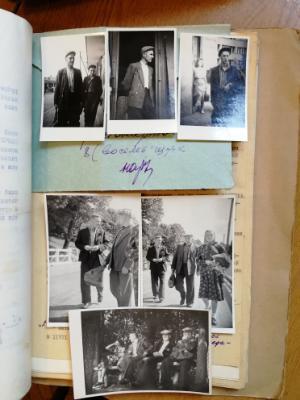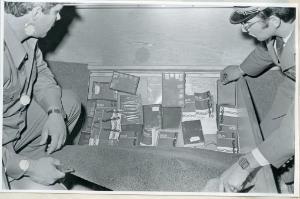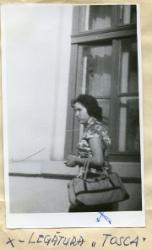- Welcome from the Head of College
- Current Undergraduate Students
- Graduate Studies
- Future Students
- International Students
- Research
- CACSSS Research Areas
- Research Impact
- Atlas of the Irish Revolution
- False Memories for Fake News in the Irish Abortion Referendum
- Atlas of the Great Irish Famine 1845-1852
- Hidden Galleries
- Movie Memories
- Between Two Unions: The constitutional future of the islands after Brexit
- Archive
- A Socio-Economic Study of Cork City Northwest Quarter Regeneration (CNWQR)
- Children’s Voices in Housing Estate Regeneration
- Cork Folklore Project
- Deep Maps: West Cork Costal Cultures
- Developing research to deliver high impacts in homelessness service provision by Cork Simon
- Moving On Ireland
- Project DaRT - Discussions and Reflections on Translation
- The Cork Folklore Project’s Memory Map
- The World-Tree Project
- The Augustinian Friars in Late Medieval Ireland
- (Re)Sounding Holy Wells
- Spotlight
- Speaking the Predicament: Empowering Reflection and Dialogue on Ecological Crisis
- Participatory arts for advocacy, activism and transformational justice with young people living in Direct Provision
- Make Film History Wins FIAT/IFTA Archive Achievement Award
- Dr. Marie Kelly (School of Film, Music & Theatre) co-edits : Scene 8 Volumes 1 and 2 (2021) – Special Issue: ‘Performance and Ireland’ (Intellect)
- The significance of humanities scholarship in challenging times
- Dr Sarah Foley, a Lecturer in the School of Applied Psychology, was awarded an NUI Grant for Early Career Academics in 2020
- NUI Awards Grant for #DouglassWeek: 8th-14th February, 2021
- Humanities for the Anthropocene
- Forgotten Lord Mayor: Donal Óg O’Callaghan, 1920-1924
- Architectural Space and the Imagination: Houses in Literature and Art from Classical to Contemporary
- Dr Siobhan O’Sullivan - Agency and ageing in place in rural Ireland
- Launch of new research cluster on 'Life Writing'
- What keeps us going?
- Through the lens of the secret police: Images from the religious underground in Eastern Europe
- Dr. Amanullah De Sondy - The Pocket Facts Guide for Jewish, Christian and Muslim People 2020
- Issue 19 of Alphaville published by The Department of Film and Screen Media
- Digital Edgeworth Network
- Make Film History: Opening up the Archives to Young Filmmakers
- Establishment of monthly online reading group on Abolition and Decarceration
- Dr Anne Marie Devlin (Applied Linguistics) published a special issue on Study abroad and the Erasmus+ programme in Europe
- Dr. Barbara Siller (Department of German), has co-published an edition on literary multilingualism.
- Postgraduate Researchers from MA in Medieval History produce Mapping Cork online exhibition
- Adaptation Considered as a Collaborative Art: Process and Practice, (Eds.: Bernadette Cronin, Rachel MagShamhráin and Nikolai Preuschoff
- (Non)Spectacular Infrastructure: Enacting Resource Circulation in Stages, Studios and Communities
- Dr. Clíona O’Carroll (Department of Folklore) has received an IRC New Foundations grant
- Dr Catherine Forde from the School of Applied Social Studies has been awarded an IRC New Foundations grant
- Elderly (non)migrants’ narratives of home: A comparative study of place-making in Ireland and Slovakia (EMNaH)
- Dr. Ken Ó Donnchú, lecturer in the Department of Modern Irish, has received an IRC New Foundations Award
- Decolonizing Irish Public Heritage
- EMBRACE - Exploring Mobility: Borders Refugees and Challenging Exclusion
- Dr. Marica Cassarino (School of Applied Psychology) awarded Royal Irish Academy and British Academy Knowledge Frontiers Network Funding
- CACSSS Postdoc wins Charlemont Grant
- Childhood, Religion and School Injustice by Karl Kitching
- New Collaboration between UCC, RTÉ and the Department of Culture, Heritage and the Gaeltacht
- Cork Movie Memories - Dan O’Connell and Gwenda Young (Department of Film and Screen Media
- Chronicles of COVID-19/Cuntais COVID-19’ initiative: testimony collection by Cork Folklore Project
- Dr. Rachel MagShamhrain (Head of Department of German) has published a co-edited collection on Adaptation
- Professor Caitríona Ní Dhúill (Department of German) has published a new monograph
- Two School Postdoctoral Fellows Awarded Royal Irish Academy and British Academy Funding
- Funding Success for Dr Joanna Hofer-Robinson
- New Collaboration between UCC, RTÉ and the Department of Culture, Heritage and the Gaeltacht
- CACSSS Postdoc wins Charlemont Grant
- Applied Social Studies team win ESWRA Outstanding Publication Award 2020
- CACSSS postdoc is awarded Maurice J. Bric Medal of Excellence at IRC’s Researcher of the Year Awards 2019.
- Past postdoctoral researchers in the College
- Dr Mastoureh Fathi
- Dr Michalis Poupazis
- Dr Richard Mason
- Dr Martin Wall
- Dr Rebekah Brennan
- Dr Tatiana Vagramenko
- Dr Anca Maria Șincan
- Dr Agnes Hesz
- Dr Gabriela Nicolescu
- Dr Kinga Povedák
- Dr Declan Taggart
- Dr Anne-Julie Lafaye
- Dr Ken Keating
- Dr Laura Maye
- Dr Martina Piperno
- Dr Brandon Yen
- Dr Annie Cummins
- Dr Rebecca Boyd
- Dr Sean Hewitt
- University Staff Recognition Awards
- CACSSS Welcome new MSCA Funded Fellows
- College of Arts, Celtic Studies and Social Sciences opens a research facility on Wandesford Quay
- IMMERSE
- CACSSS Wins Big at UCC 2018 University Staff Recognition Awards
- Upcoming Events
- Event Archive
- CACSSS Research Highlights 2012 - 2020
- Research News Archive
- IRC awards funding to 3 projects in the Dept of Archaeology: DAEICS - Digital Atlas of Early Irish Carved Stones (PI Dr Tomas O’Carragain)
- IRC awards funding to 3 projects in the Dept of Archaeology: NEW PASTURES (PI Dr Katharina Becker)
- CIPHER project shortlisted for Times Higher Ed (THE) Award
- CACSSS Researcher funded through HEA North South Research Programme with UU to explore Critical Epistemologies Across Borders (CEAB)
- Leabhar Nua ar an bhFiannaíocht/New Publication on the Finn Cycle
- Cork and Belfast north south prison-university classroom partnerships secure funding from government’s shared island initiative
- Women of the Borderlands: A Walking Biographical Study of Women’s Everyday Life on the UK/Irish Border funded through the HEA North-South Partnership
- Ultonia - Cultural Dynamics in medieval Ulster and beyond: a shared inheritance
- IRC awards funding to 3 projects in the Dept of Archaeology: IPeAT - Irish Peatland Archaeology Across Time (PI Dr Ben Gearey)
- Dr Edward Molloy, School of English and DH - wins Maurice J. Bric Medal of Excellence in IRC’s Researcher of the Year Awards 2020.
- Professor Claire Connolly (School of English and Digital Humanities) appointed to the Irish Research Council
- Dr Máirín MacCarron FRHistS wins the NUI Irish Historical Research Prize 2021
- ERC Hidden Galleries project publishes The Secret Police and the Religious Underground in Communist and Post-Communist Eastern Europe
- CACSSS researchers to host EPA funded online workshop
- €1.5 million ERC Starter Grant Award for Researcher in Dept of Music, School of Film Music and Theatre
- Three PhD students in Applied Psychology commence projects funded through SFI research centre Lero
- CACSSS Researcher co-authors paper for Science on the ‘ecological’ survival of rare manuscripts and texts
- 2021 Research Awardees recognised
- New Foundations Call 2022 open
- C21 Editions
- University College Cork and the Arts Council have appointed Alan Gilsenan as the 2019/20 Film Artist in Residence.
- School of Applied Psychology hold an open house showcase for People and Technology Research Group
- CACSSS Researcher secures major IRC Laureate award for project GENCHRON to explore gender, chronology and time in the Medieval world
- CACSSS Researcher secures major IRC Laureate award for project Cyber Social
- New York Times reports on CACSSS Researcher Dr Alexander Khalil’s (School of Film, Music & Theatre) collaborative music and neuroscience work
- project MUSLIMWOMENFILM project selected for publication in the ‘Results in Brief’ section of the European Commission’s CORDIS website
- GendeResearchIreland Symposium: Reflections on Institutionalising Gender Equality in Higher Education
- Community Engagement
- Careers & Employability
- Information for Guidance Counsellors
- Information for Staff
- Schools in the College
- People
Through the lens of the secret police: Images from the religious underground in Eastern Europe
Dr James Kapalo (Senior Lecturer Study of Religions Department) and Dr Gabriela Nicolescu (Postdoctoral Researchers Hidden Galleries project) have opened an exhibition featuring materials and items collected and analysed as part of the ERC funded Hidden Galleries project on Friday 9th October 2020 in the Boole Library, UCC. The exhibition will run from October 9th until March 31st 2021, Boole Library, University College Cork (Library opening times are available at: www.ligbuides.ucc.ie/aboutus/openinghours in line with Govt guidelines only 2 people at a time are  allowed into the exhibition space).
allowed into the exhibition space).
Funded by the European Research Council and based in the Study of Religions Department, Hidden Galleries (ERC project no. 677355) concerns the role of religious minorities in the transformation of Central and Eastern Europe societies in the 20th century seen through the prism of the secret police archives in the region.
The exhibition, “Through the lens of the secret police: Images from the religious underground in Eastern Europe”, explores the legacy of secret police operations against and surveillance of religion through a visual cultural lens. Comprised of photographs shot or stolen by the secret police in the Soviet Union, Romania and Hungary, the images in the exhibition are sometimes violent or intrusive, at other times personal or with a documentary quality. The materials on display, which were used at the time as evidence of crimes and in anti-religious propaganda, today prompt varied interpretations. Can these photographs escape the categories of the archives into which they were placed? Who should have control over the use of these materials today? What impact does it have to view someone through the lens of the secret police?
The exhibition is accompanied by the publication of a book Hidden Galleries: Material Religion in the Secret Police Archives in Central and Eastern Europe co-edited by Tatiana Vagramenko and James Kapaló, that presents in a series of short essays selected examples from the Hidden Galleries Digital Archive (see below) and exhibitions. Describing the book as “a true publishing event” Cristina Văţulescu (New York University) expert in Soviet-era cultural expression and the secret police argues that the book “gives us an unprecedented window into a diversity of religious practices and their state repression…. Hidden Galleries sets a new scholarly and ethical standard for research in the secret police archives”.
 Other outputs from the four-year Hidden Galleries project include the Digital Archive. This focusses on the creative practices and visual materials produced by and about religious groups that formed the religious underground during periods of totalitarian rule. Featuring rarely seen and difficult to locate materials, the Digital Archive is designed to encourage comparative, cross-cultural research on creative responses to repression in the twentieth century as well as serving to reconnect religious communities with aspects of their lost cultural and sacred patrimony. The collection not only features photographs, icons, brochures, drawings, letters, hymns and diaries confiscated from banned religious communities but also secret police representations of the religious underground in the form of photographs, maps, illustrations and network schemes designed to incriminate and visualise the hidden and secretive enemies of the state.
Other outputs from the four-year Hidden Galleries project include the Digital Archive. This focusses on the creative practices and visual materials produced by and about religious groups that formed the religious underground during periods of totalitarian rule. Featuring rarely seen and difficult to locate materials, the Digital Archive is designed to encourage comparative, cross-cultural research on creative responses to repression in the twentieth century as well as serving to reconnect religious communities with aspects of their lost cultural and sacred patrimony. The collection not only features photographs, icons, brochures, drawings, letters, hymns and diaries confiscated from banned religious communities but also secret police representations of the religious underground in the form of photographs, maps, illustrations and network schemes designed to incriminate and visualise the hidden and secretive enemies of the state.
The Digital Archive, contains materials from Hungary, Romania, Moldova and Ukraine collected and curated by James Kapaló, the Principal Investigator, and a team of postdoctoral and PhD researchers, Kinga Povedák, Ágnes Hesz, Anca Șincan, Tatiana Vagramenko (IRC postdoctoral researcher), Iuliana Cindrea and Dumitru Lisnic.
 “This exhibition provides an opportunity to engage with the tremendous research undertaken by James Kapalo and the Hidden Galleries team enabled by the prestigious ERC award – I would like to congratulate the team on the powerful, scholarly work they have undertaken providing unique insight into very challenging human experiences. “ said Professor Anita Maguire, Vice President for Research and Innovation at UCC .
“This exhibition provides an opportunity to engage with the tremendous research undertaken by James Kapalo and the Hidden Galleries team enabled by the prestigious ERC award – I would like to congratulate the team on the powerful, scholarly work they have undertaken providing unique insight into very challenging human experiences. “ said Professor Anita Maguire, Vice President for Research and Innovation at UCC .
Speaking at the opening of the Hidden Galleries exhibition Professor Chris Williams Head of the College of Arts, Celtic Studies and Social Sciences (CACSSS) commented “This is a wonderful piece of historical research by the team….the materials presented in this exhibition are a wonderful testament to the importance of freedom of conscience in twentieth and twenty first century societies”.
 Having toured the exhibition Dr Helena Buffery Vice Head for Research and Innovation CACSSS spoke of the College’s delight at being “able to host the fruits of the Hidden Galleries research here in UCC… thank you on behalf of the entire research community in UCC, this is an incredible achievement”.
Having toured the exhibition Dr Helena Buffery Vice Head for Research and Innovation CACSSS spoke of the College’s delight at being “able to host the fruits of the Hidden Galleries research here in UCC… thank you on behalf of the entire research community in UCC, this is an incredible achievement”.
You can follow the Hidden Galleries project on Facebook and Twitter @hiddengalleriesERC
To view the images and narratives in the exhibition explore the Hidden Galleries Digital Archive: http://hiddengalleries.eu/digitalarchive
To see a short video about the Hidden Galleries exhibition in the Boole:
